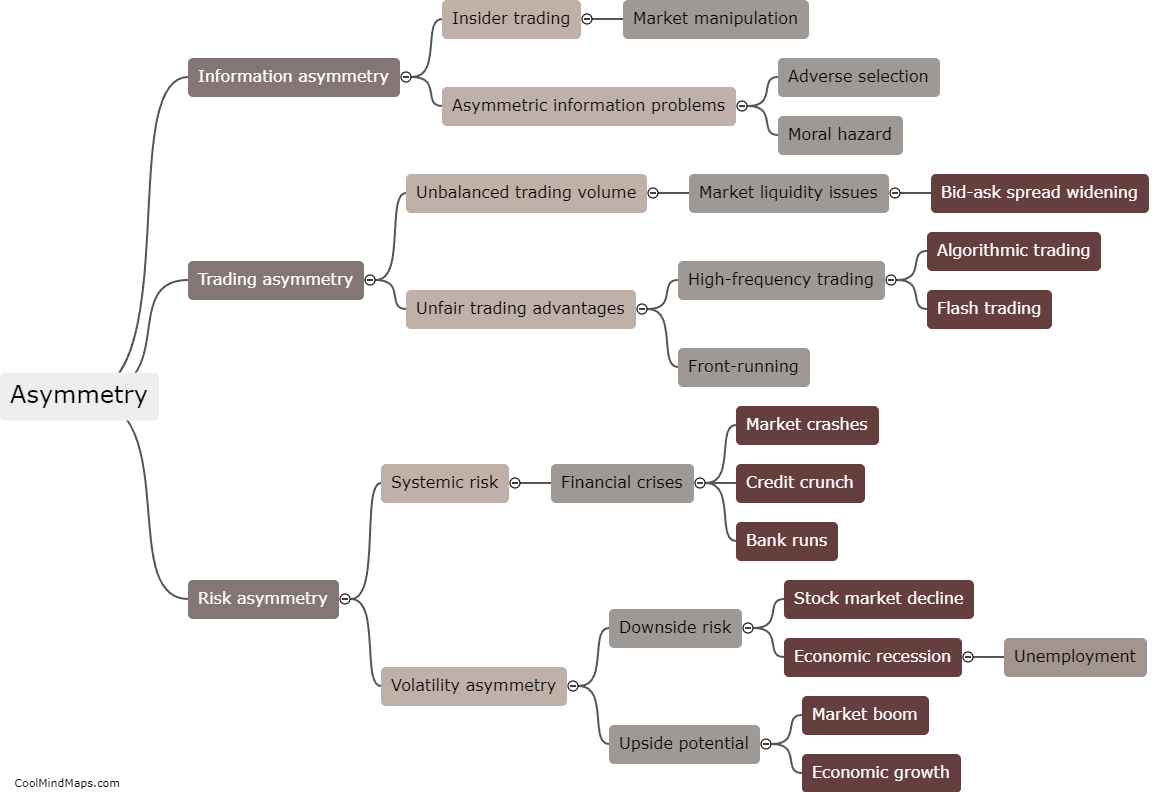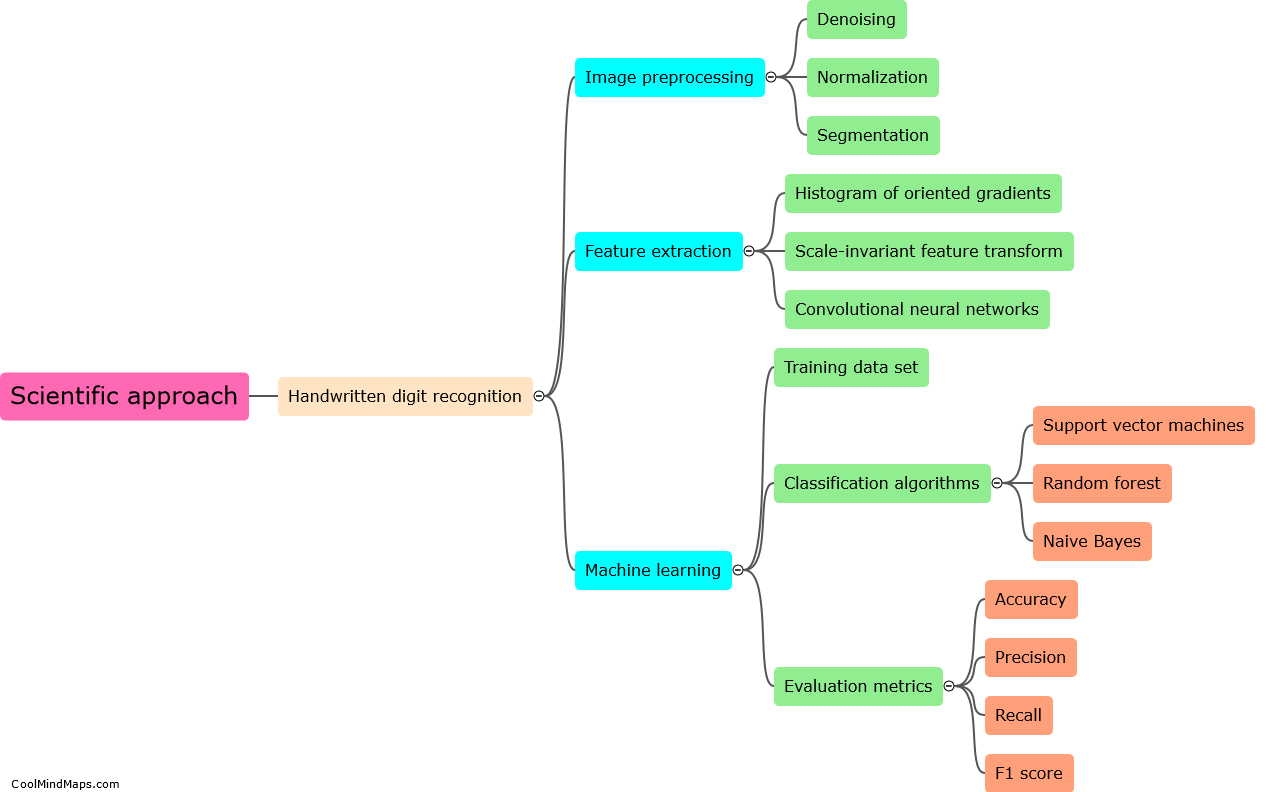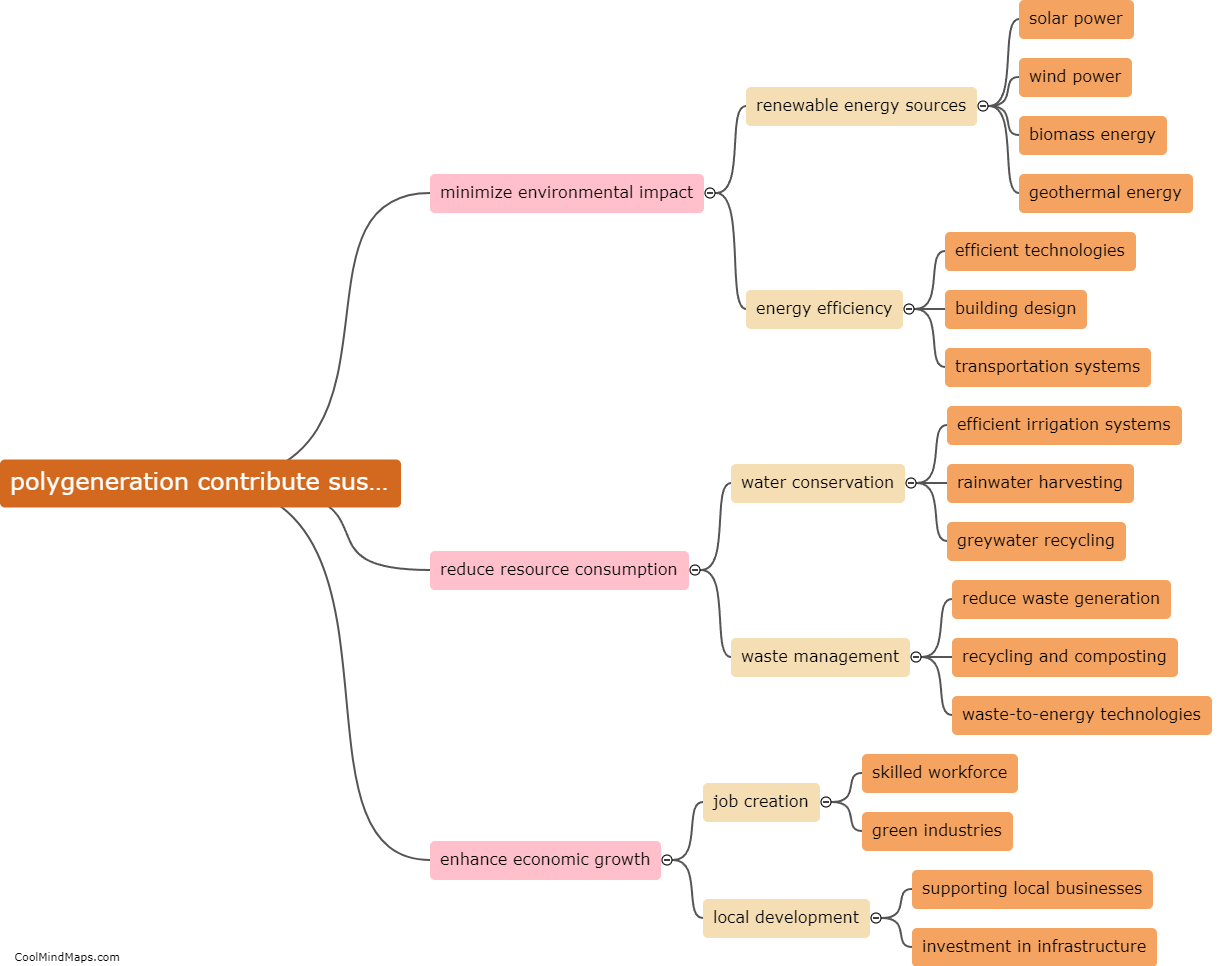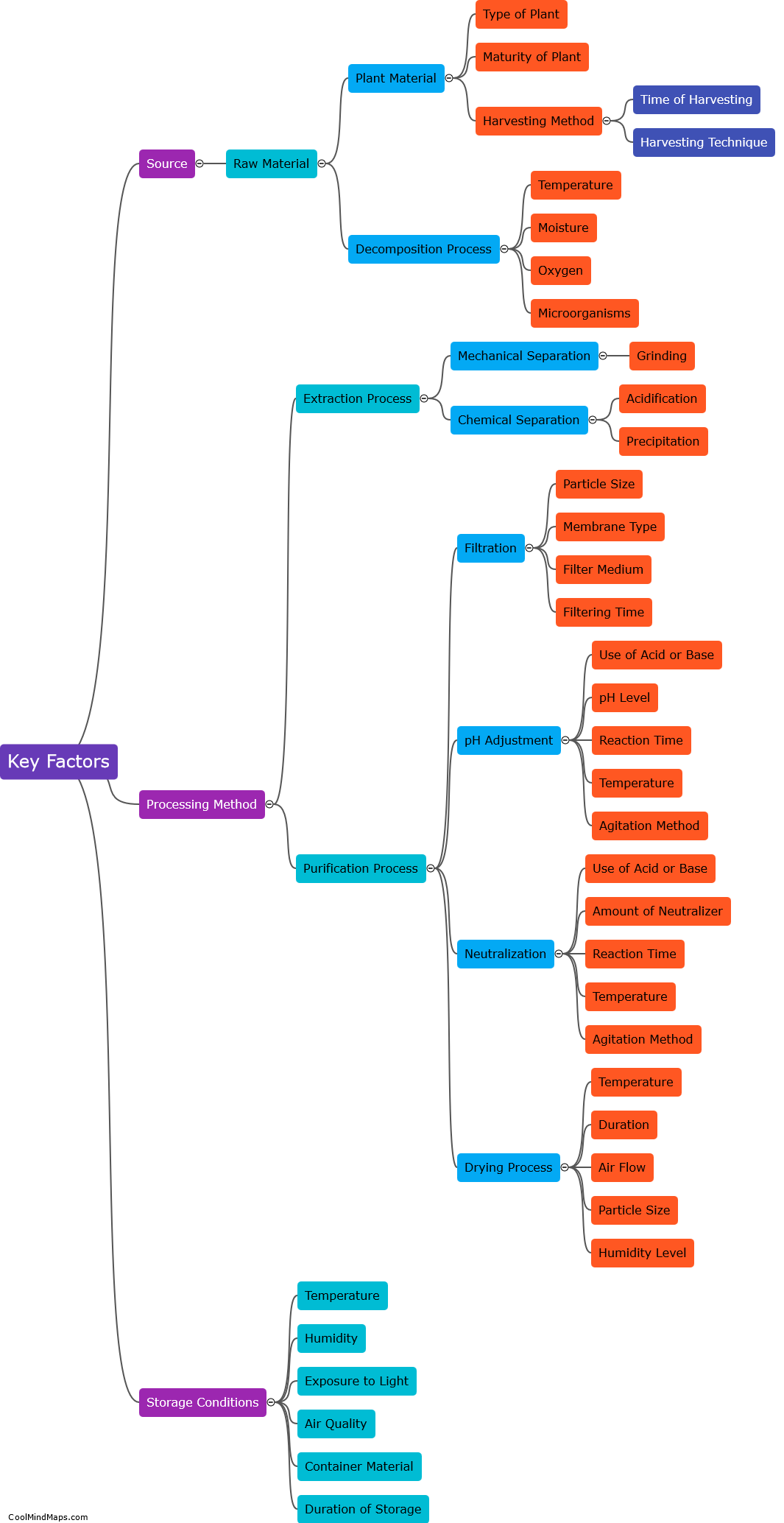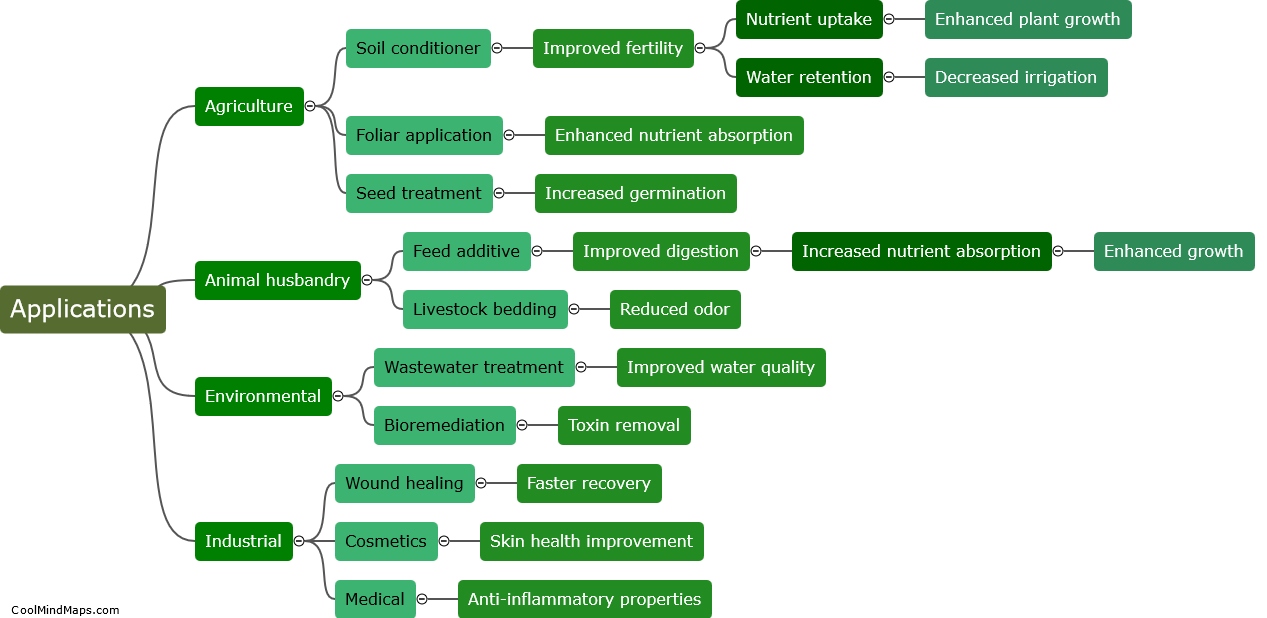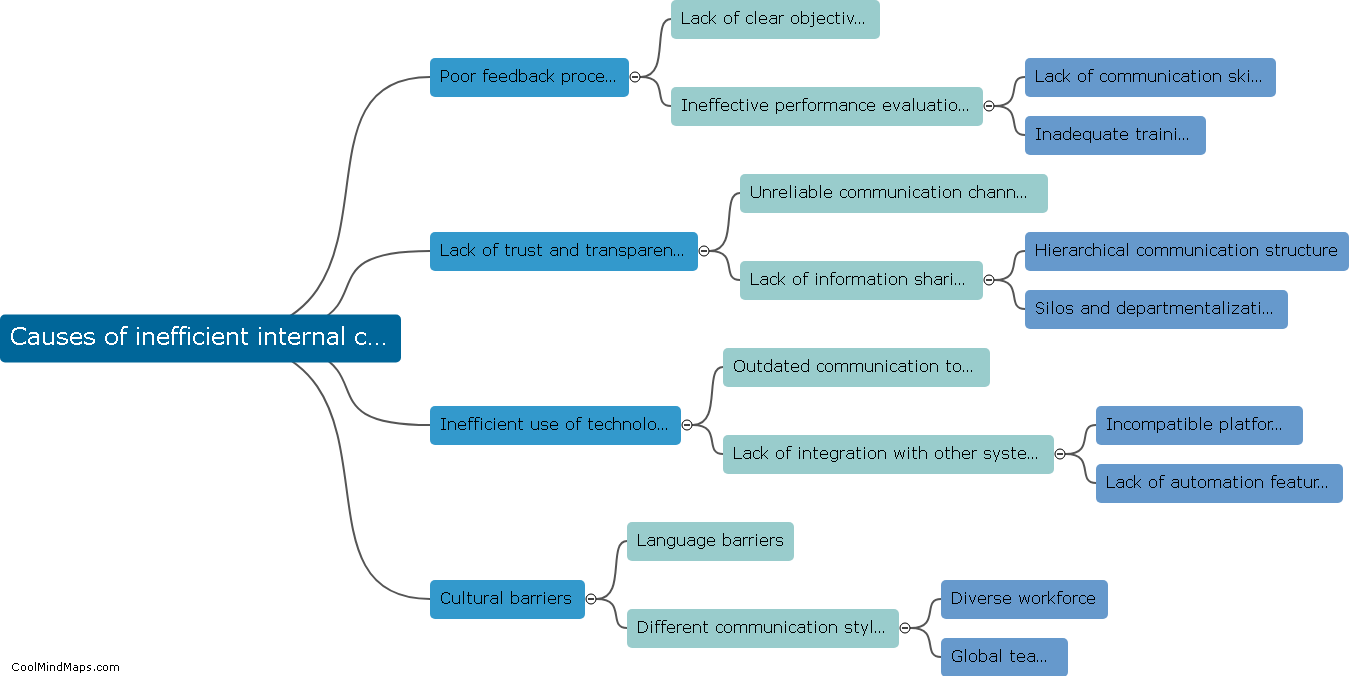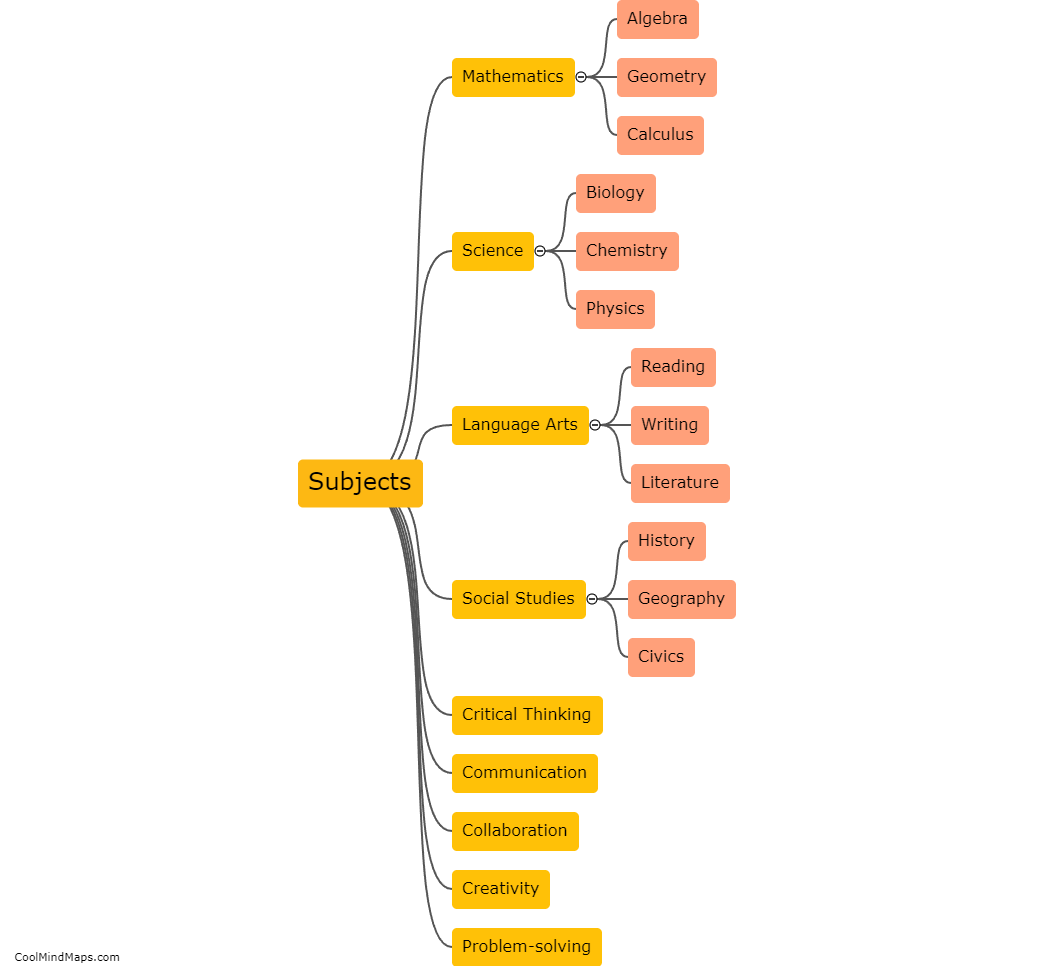What are the different methods for humic acid production?
Humic acid is a vital organic component found in soil, sediment, and water bodies. There are various methods for humic acid production, including natural extraction, chemical synthesis, and microbial decomposition. Natural extraction involves the collection of humic substances from peat, lignite, or leonardite deposits through alkaline or acid extraction methods. Chemical synthesis, on the other hand, involves the reaction of different organic compounds to form humic acids. Lastly, microbial decomposition utilizes microorganisms to break down organic materials, such as compost or vermicompost, which results in the production of humic substances. Each method has its advantages and disadvantages, and the choice of method depends on factors like cost, yield, and the desired properties of the humic acid product.
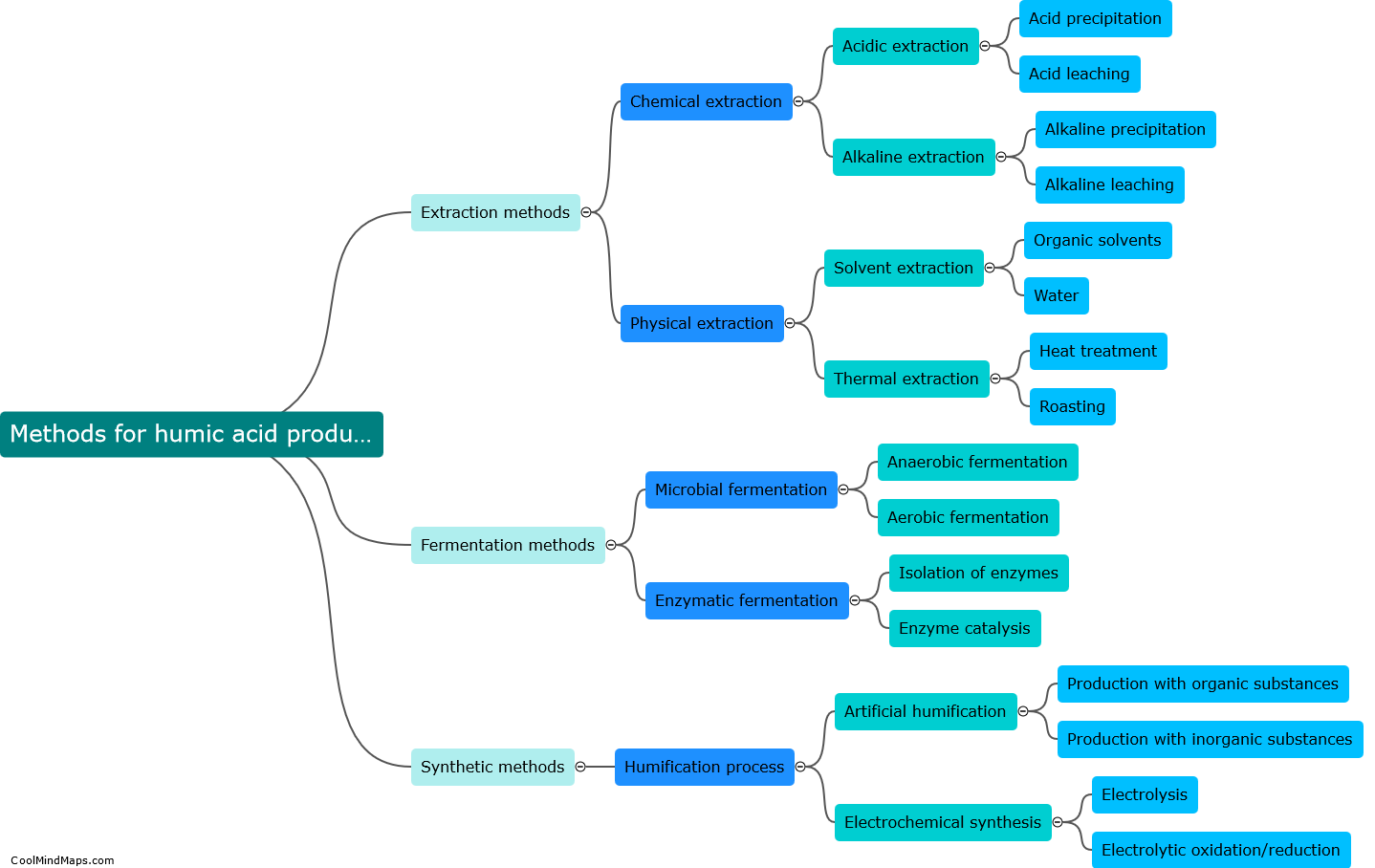
This mind map was published on 13 December 2023 and has been viewed 84 times.
